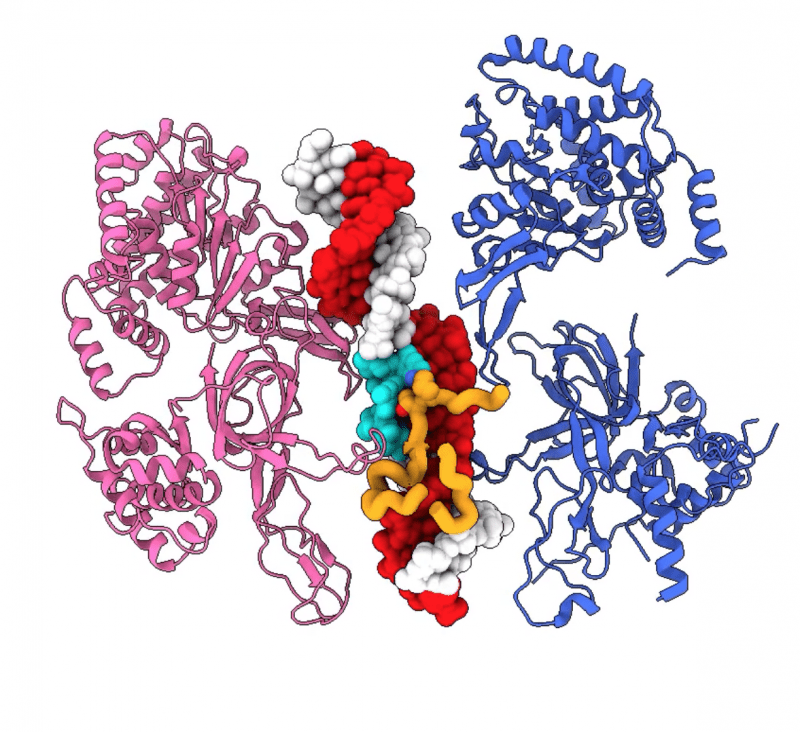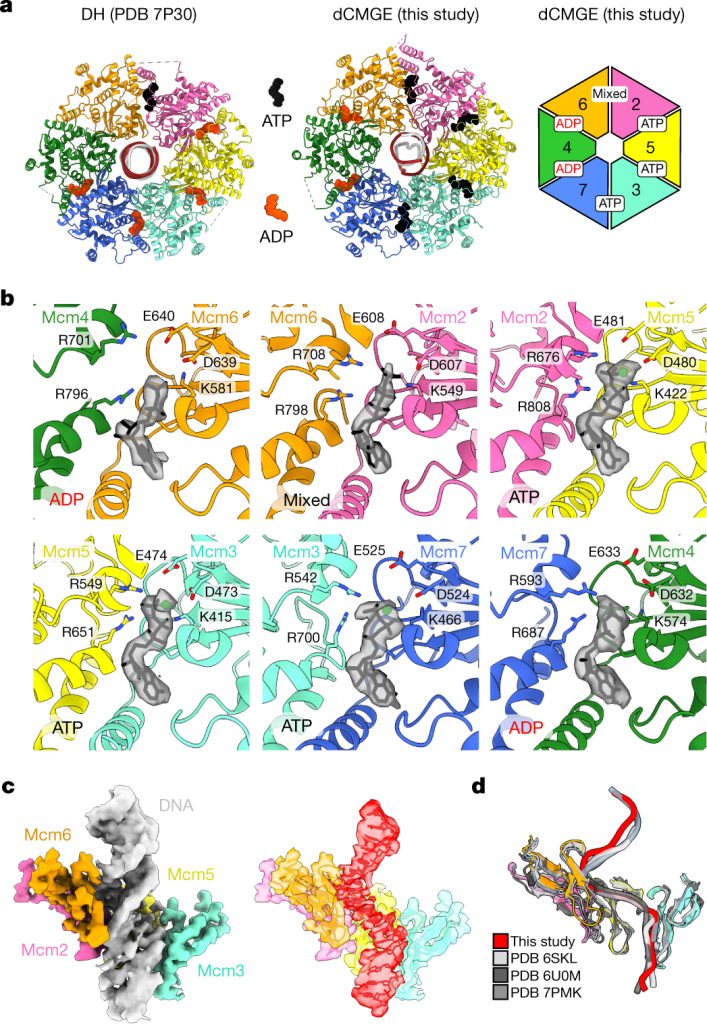Scientists at the Francis Crick Institute have uncovered how the DNA double helix structure is opened to allow DNA replication. The research could pave the way for additional investigations to understand this mechanism better, particularly how it can go wrong in conditions like cancer.

Image Source: https://www.crick.ac.uk/news/2022-06-15_scientists-unravel-key-step-in-dna-replication.
Scientists have struggled to comprehend how the two strands of DNA are opened to access the genetic information they contain ever since the double helix structure of DNA was discovered over 70 years ago.
For vital operations, including DNA repair, gene expression, and DNA replication for cell division, this opening is necessary. Recent investigations have detailed these processes in the recombinases that facilitate strand exchange and the transcription pre-initiation complex that supports RNA production.
The structure of an origin duplex caught in the act of nucleating a replication bubble must be determined in order to comprehend the mechanism of the ATP-triggered opening of duplex DNA at the molecular level. Bacteria and eukaryotic viruses use a single protein that oligomerizes and deforms the double helix to open the origin DNA, although these melting intermediates have not yet been structurally described.
The researchers used a yeast model in their study, published last week in Nature, to understand better how the enzyme that prepares DNA for replication functions. They worked with Crick’s Chromosome Replication Laboratory on this project. The entire process of the DNA double helix being untwisted and opened was visualized by the researchers using a cutting-edge imaging technique known as cryo-electron microscopy.
According to Alessandro Costa, author and group leader of the Macromolecular Machines Laboratory at the Crick, over many years, researchers have pieced together which enzymes are needed to open DNA and start replication, including their collaborator John Diffley at the Crick.
Now when the researchers examined replication initiation under a microscope, they have found that the mechanism is entirely distinct from that used to initiate other cellular activities like gene transcription and recombination. The researchers believe that by comprehending this distinction, the researchers will be able to provide a thorough representation of the intricacies of life.
According to Jacob Lewis, author and Postdoctoral Training Fellow in the Macromolecular Machines Laboratory at the Crick, studying how DNA replication starts and is regulated requires an understanding of the process underlying the melting of the DNA double helix. Understanding how to maintain chromosome integrity, a process that fails in cancer, is significantly impacted by this.
The mechanism underlying the nucleation of DNA melting at a replication origin has remained a mystery for many years, this work fills that gap.
The researchers recreate a multi-step biological process involving 32 polypeptides to characterize the structure of the CMG replicative helicase constructed sequentially onto the ARS1 origin. Base-pair disruption is caused by changes in MCM that are activated by ATP and encourage pulling of the leading-strand and pushing the lagging-strand template DNA.

Image Source: Mechanism of replication origin melting nucleated by CMG helicase assembly
The scientists will continue their research to determine how the DNA replication machinery opens the double helix and how this is controlled to prevent DNA damage from building up.
Story Source: Lewis, J.S., Gross, M.H., Sousa, J. et al. Mechanism of replication origin melting nucleated by CMG helicase assembly. Nature (2022). DOI: https://doi.org/10.1038/s41586-022-04829-4
https://www.crick.ac.uk/news/2022-06-15_scientists-unravel-key-step-in-dna-replication
Learn More About Bioinformatics:
Top Bioinformatics Books ↗
Learn more to get deeper insights into the field of bioinformatics.
Top Free Online Bioinformatics Courses ↗
Freely available courses to learn each and every aspect of bioinformatics.
Latest Bioinformatics Breakthroughs ↗
Stay updated with the latest discoveries in the field of bioinformatics.
Dr. Tamanna Anwar is a Scientist and Co-founder of the Centre of Bioinformatics Research and Technology (CBIRT). She is a passionate bioinformatics scientist and a visionary entrepreneur. Dr. Tamanna has worked as a Young Scientist at Jawaharlal Nehru University, New Delhi. She has also worked as a Postdoctoral Fellow at the University of Saskatchewan, Canada. She has several scientific research publications in high-impact research journals. Her latest endeavor is the development of a platform that acts as a one-stop solution for all bioinformatics related information as well as developing a bioinformatics news portal to report cutting-edge bioinformatics breakthroughs.











